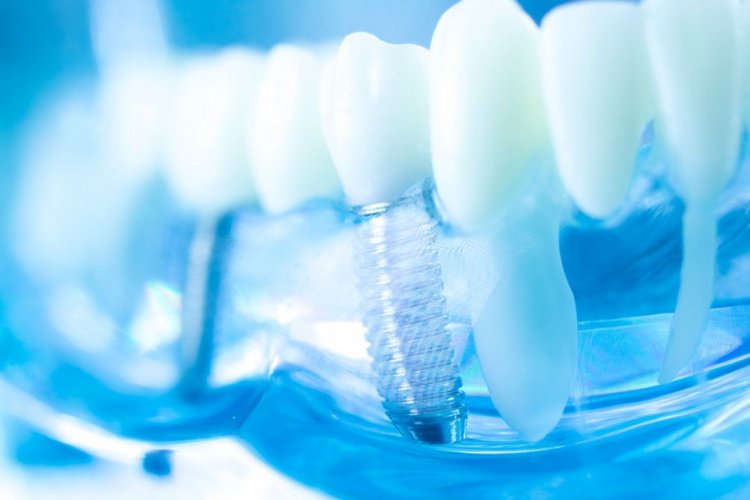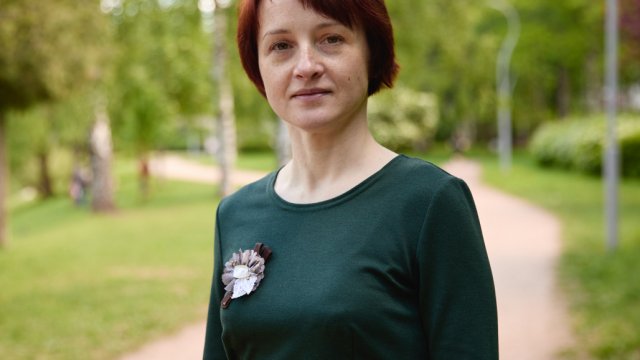Many people are still afraid of it today: in a comfortable chair, in bright light, after an injection of anesthesia. And still, many are trying to postpone the appointment to the dentist till the pain becomes unbearable. And while today, most often fear has no ground, a couple of centuries ago people knew it for sure – it’s going to be painful and unpleasant. The article talks about how dentistry has developed, and what materials and technologies are the priority for doctors today.
Archaeologists find evidence in excavations that people tried to treat teeth thousands of years ago. In the front teeth of the skulls, which date back to the 9th millennium BCE, they found inserted pieces of gold or decorative stones – it is obvious that this is precisely the aesthetic aspect of ancient dentistry. But in 2006, in the excavations of the Pakistani Mehrgarh, researchers found 11 artificially drilled teeth, and those that are deep in the mouth, which means that unlikely, these holes were drilled for decorative purposes. These findings prove that about 5–6 thousand years BCE, people were already trying to treat teeth with methods that are still used to some extent today.
Blacksmiths, executioners, hairdressers, and jewelers – these jobs are popular and highly paid today, but in the past, people used to practice them without special skills. Sore teeth were removed more often than treated. In Russia, the term “dentist” was introduced only by Peter I at the beginning of the 18th century, and the first dental school opened in 1881 in St. Petersburg.
No dental “grr”
“Well, let’s continue” and the sound of a jackhammer – while grotesquely, this scene from “Ivan Vasilyevich” conveys the level of technology of the mid-20th century. However, even up to this level, drills had been developing for years: the manual drill was replaced by a mechanical one, which was wound up like a clock. The mechanical one, in turn, gave way to a foot-driven drill, which was later replaced by electric devices. Each subsequent invention for drilling teeth gave more revolutions per minute: this reduced the time spent in a chair as well as painful sensations.
Today, some technologies offer to treat decay without using a drill. In particular, this is the use of a laser. For a patient, this procedure is much more comfortable – there is no sensitive interference and unpleasant sound. At the same time, the laser removes the damaged areas of the tooth without affecting healthy tissues. You can use a laser to treat decay only at the initial stage of the disease when the lesion has not gone deep into the tooth. To treat deep cavities, you still need to use a drill.
In the early stages, it is possible to cure decay without physical intervention. If the carious cavity has not yet formed, the initial disease can be removed by infiltration in one visit. The doctor treats the tooth with a special gel that etches the lesion. The gel is washed off, the tooth is dried, and the affected area is filled with a polymer that seals the enamel pores.
You can also remove damaged tissues with gas. Today, ozonation technology is used in dental clinics. When treating a tooth, most of the bacteria are destroyed in the first 40 seconds. At the same time, the gas penetrates the areas of the tooth, where it is not easy to reach with a surgical instrument.
Sealing off the way for bacteria
If you still had to drill a tooth, you need to cover the hole. Since ancient times, fillings have been used to stop or at least slow down the destruction of the tooth.
The first filling materials were metals: gold, silver, lead. In a Chinese medical treatise of the 7th century AD, there was a mention of silver filling paste, and in 1826, the first amalgam fillings were first installed – a mixture of silver and mercury. Such fillings were used for a long time until they were replaced by modern materials.
Today, some of the most popular dental filling materials are composites that harden under the light of a special lamp. The photo- or light-curing composite consists of an organic matrix, inorganic filler, and binding substance. In terms of structure and strength, such materials practically do not differ from dental tissues, and after aesthetic treatment, they look natural.
Treatment in comfort
Patients had to be immobilized: the original methods of tooth extraction were far from modern human approach. In Japan, for example, sore teeth were pulled out by hand, and to make it easier to pull them, they were loosened with a hammer blow. In combination with primitive methods of anesthesia, or even without it at all, surgery was rather painful. The Scythian vase, which dates to the 4th century BCE, depicts a scene where a doctor holds a patient’s head with one hand and pulls out a tooth with the other. However, some researchers believe that this can also be a therapeutic procedure.
Initially, patients had to lay on their backs on a table or sit on a floor – it was more convenient to hold them this way, and the dentist performed the surgery. The first dental chair appeared only in the first half of the 17th century, when the Frenchman Pierre Fauchard decided to seat patients on a chair – and so emerged the standard still used to this day.
The first chairs evolved for several centuries to become modern dental installations with a set of tools, a comfortable couchette, and direct light. First, a headrest and a shelf for tools were added to the chair. After that, the chair design started to allow tilting the patient to make it more convenient for the dentist to work. There was a hydraulic adjustment and a footrest.
Along with a comfortable position for the patients, attempts were made to ease the pain from the surgery. For a long time, ether was a popular means of anesthesia. In 1799, a British chemist Humphrey Davy discovered a new way to distract from pain – nitrous oxide. During the N2O experiments, he noticed slight euphoria and narcotic effects, so he called the substance “laughing gas.” And besides, there was another pleasant effect: after inhaling the gas, a tooth stopped aching – so the anesthetic properties were discovered. At the end of the 19th century, novocaine was synthesized, and in 1943, lidocaine was discovered. The syringe design for the local anesthesia and drugs for general anesthesia were also improved.
Computer technologies
Technologies are actively developing around the world to help dentists and patients. For example, augmented and virtual reality technologies are used to train future doctors. In particular, augmented reality is used to model prostheses, and with the help of a VR camera, one can watch a complex surgery performed by an experienced surgeon without crowding around an already tense patient.
Electronic toothbrushes make a 3D map of the oral cavity and tell you which areas should be given more attention when brushing. With the help of telemedicine, dentists can consult patients without visiting the office. And 3D printing technologies offer to make an individual crown directly in the dentist’s office.
Photo: edwardolive / ru.123rf.com
Based on open sources






















